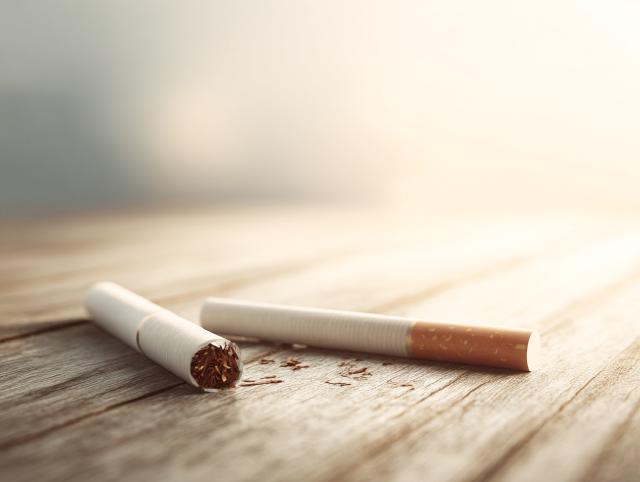The Secret to Success: Reduce Dose, Not Quantity

Introduction: not the number, but the dose
One of the most common myths is:
“If I smoke less, the harm is less.”
At first glance, it sounds logical. But in reality, the body receives the same or even higher nicotine dose.
The secret to success is not cutting the number of cigarettes, but gradually reducing the nicotine dose itself.
Cigarette count ≠ nicotine dose
Many think that smoking 10 instead of 20 cigarettes will cut dependence in half. In practice, it doesn’t work that way.
Why this fails
- Smokers start craving the “allowed cigarettes” and rely on them more.
- They inhale more deeply and hold the smoke longer.
- The nicotine dose hardly decreases — sometimes it even rises.
📌 The result: dependence remains, while the sense of “restriction” fuels stress and irritability.
Mini-story
Michael decided to cut down: instead of a pack, just 5 cigarettes a day. But those 5 became “special” — long drags, maximum intensity. His dependence didn’t weaken; it grew stronger.
Why “smoking fewer but stronger” is self-deception
When the number of cigarettes is reduced sharply, the body experiences nicotine deficit.
What happens
- Smokers compensate by “squeezing out” maximum nicotine from each cigarette.
- The brain receives nearly the same dose.
- Dependence remains unchanged.
It’s like trying to lose weight by “eating less often” but doubling your portions when you do.
👉 More on the physiology of addiction in Why Quitting Cold Turkey Is the Worst Advice.
Gentle dose reduction → less withdrawal
The real key to success is reducing dose, not quantity.
The difference
- Cutting quantity makes withdrawal stronger, raising relapse risk.
- Reducing dose lets the body adapt gradually, with minimal withdrawal.
How it looks
- Instead of smoking a whole cigarette, switch to a lower-dose nicotine replacement.
- Step down the dosage over time.
- The body naturally learns to function without nicotine.
📌 This is not prohibition — it’s bypassing the addiction mechanism.
Mini-story
Anna switched to nicotine gum, gradually lowering the dose in each piece. A few months later, she noticed the cravings had faded. “I just stopped needing nicotine,” she said.
Myth: “Willpower is all that matters”
The belief is that you just need to “endure and hold on.” But willpower doesn’t erase the biochemistry of addiction.
- Nicotine directly affects the brain and nervous system.
- Fighting it with willpower alone is like resisting thirst without water.
- The right way is to work with your body, not against it.
📌 That’s why dose reduction is far more effective than simply cutting cigarette numbers.
👉 See Why Willpower Doesn’t Work When Quitting Smoking.
Financial side: dose matters too
Many notice: the fewer cigarettes, the stronger the urge to compensate. Packs run out faster, or the temptation grows to buy stronger ones.
Instead of saving, costs often stay the same or rise.
For example:
- 1 pack a day = about $90 a month or $1,080 a year.
- “Smoking less but stronger” doesn’t reduce dependence — and doesn’t reduce spending.
What studies say
Health organizations confirm: gradual dose reduction is easier on the body than sharp cuts in quantity.
- CDC notes that reducing nicotine dosage with replacements helps control withdrawal.
- WHO emphasizes: step-down quitting reduces stress and improves long-term success rates.
Conclusion: why dosage is the key
- Cigarette count doesn’t reflect the real nicotine dose.
- “Smoking less but stronger” is an illusion of progress.
- Gradual dose reduction is the way to quit without stress and breakdowns.
📌 Real freedom comes when the body learns to live without nicotine — not when it just “waits for the next cigarette.”
This path restores energy and endurance without cigarettes.
Want to know how to lower dose safely?
In my PDF guide you’ll find:
- a chart with real dosages,
- a step-by-step reduction plan,
- rules to reach zero calmly and regain control over your life.
🚀 Ready to quit smoking?
The SmokingBye PDF is a gentle, step-by-step way out: gradual nicotine reduction with no stress and no relapses.


